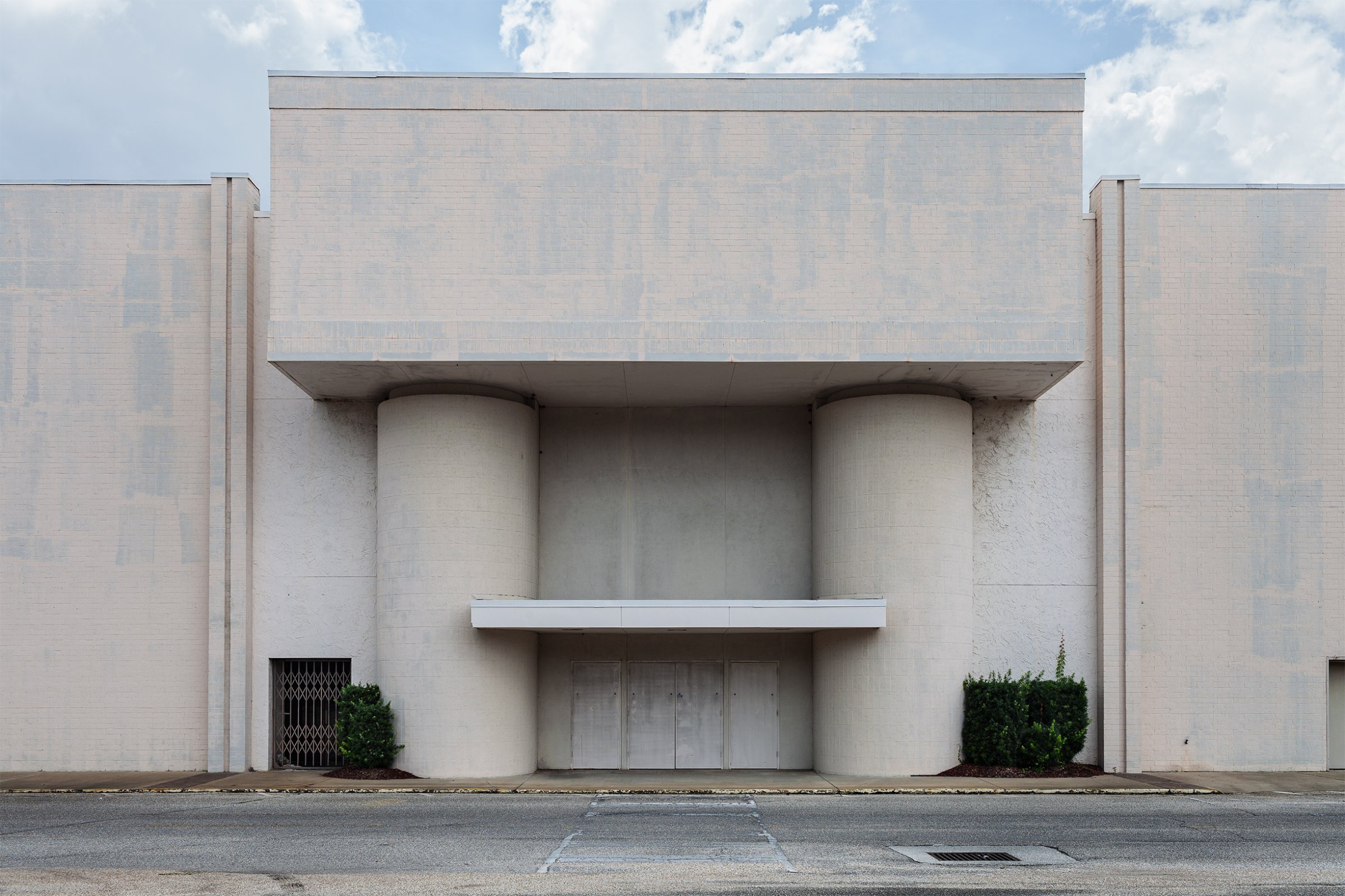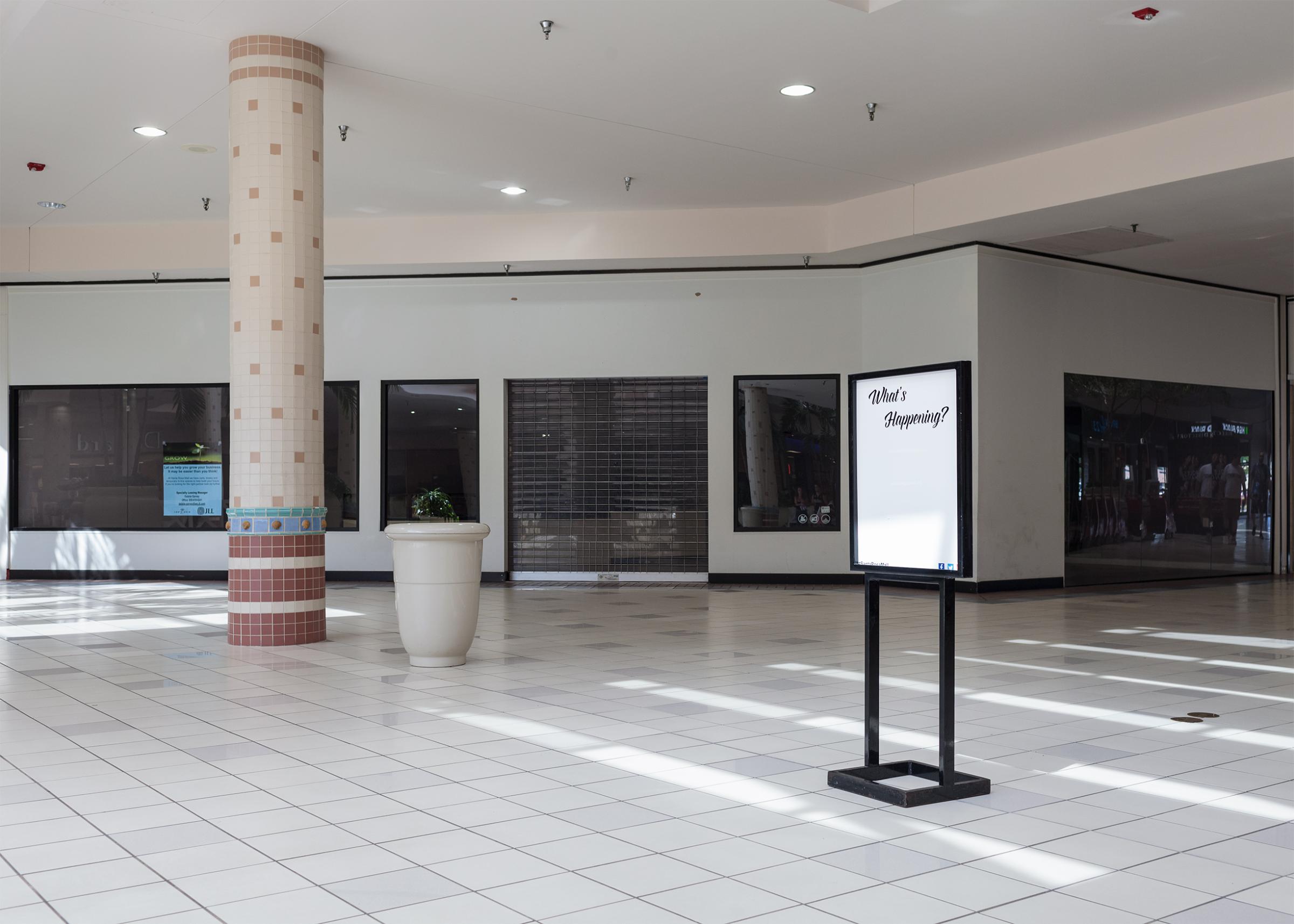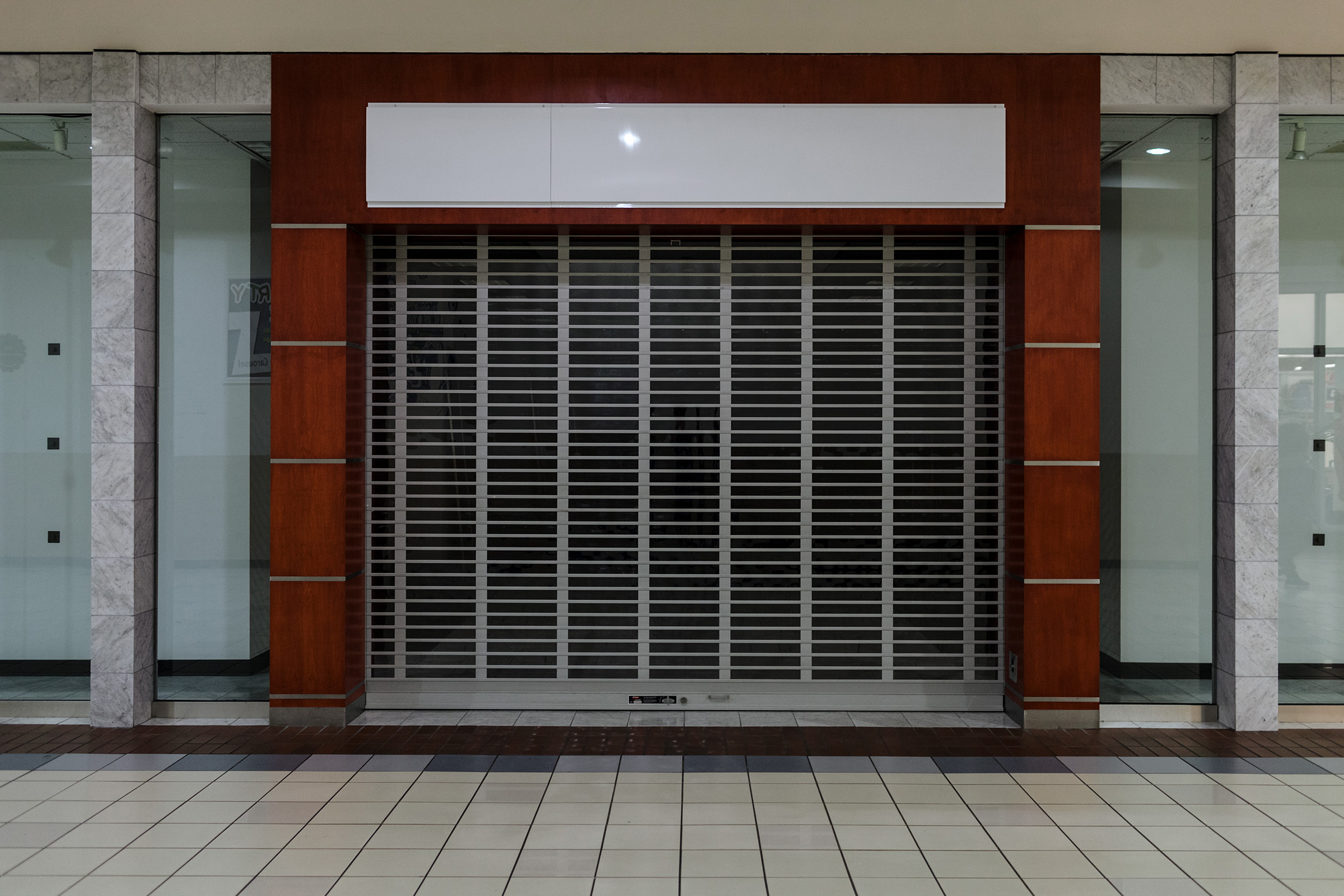
The Schuylkill Mall in Frackville, Pa., is open for business, but you have to look hard to know it. The stores that have shuttered–Sears, Kmart, Spencer Gifts, Hallmark Cards–far outnumber the dozen businesses that remain. The customer-service office is cordoned off by a metal gate. The plants underneath the skylight droop toward a ring of yellow caution tape, and the piped-in music echoes off barren walls. The mall used to have a dance club. Now it’s a dialysis center.
A decade ago, the Schuylkill Mall and its 90 stores, restaurants and knickknack kiosks was a nexus of daily life in this part of Pennsylvania coal country, where teenagers met to flirt as warm-up-suited seniors walked laps around them. Crowds thronged to the annual Easter egg hunt and Lithuanian Days festival, a nod to the region’s ancestral ties. “I had to say excuse me a million times to get to work,” says Jane Krick, a waitress at Suglia’s Pizzeria & Restaurant, the last full-service restaurant standing. “It was full of people. Now we get a million phone calls a day asking, Are you still open?”
It won’t be for long. In early May, management gave the remaining tenants 60 to 90 days to close up shop. Tenants expect the property to be demolished. The wrecking ball will put the mall in good company around the nation. By 2022, analysts estimate that 1 out of every 4 malls in the U.S. could be out of business, victims of changing tastes, a widening wealth gap and the embrace of online shopping for everything from socks to swing sets.
This year alone, more than 8,600 stores could close, according to industry estimates, many of them the brand-name anchor outlets that real estate developers once stumbled over themselves to court. Already there have been 5,300 retail closings this year, including Sears, Macy’s, JCPenney and Kmart stores. Sears Holdings–which owns Kmart–said in March that there’s “substantial doubt” it can stay in business altogether, and will close 300 stores this year. In April, Payless Inc. announced it would close 400 of its shoe stores as part of its bankruptcy plan–on top of a separate 400 it had already scheduled to close. The mall staple RadioShack has filed for Chapter 11 twice in two years. So far this year, nine national retail chains have filed for bankruptcy.
Local jobs are a major casualty of what analysts are calling, with only a hint of hyperbole, the retail apocalypse. Since 2002, department stores have lost 448,000 jobs, a 25% decline, while the number of store closures this year is on pace to surpass the worst depths of the Great Recession. The growth of online retailers, meanwhile, has failed to offset those losses, with the e-commerce sector adding just 178,000 jobs over the past 15 years. Some of those jobs can be found in the massive distribution centers Amazon has opened across the country, often not too far from malls the company helped shutter. One of them is in Breinigsville, Pa., 45 miles from Schuylkill.
But those are workplaces, not gathering places. The mall is both. And in the 61 years since the first enclosed one opened in suburban Minneapolis, the shopping mall has been where a huge swath of middle-class America went for far more than shopping. It was the home of first jobs and blind dates, the place for family photos and ear piercings, where goths and grandmothers could somehow walk through the same doors and find something they all liked. Sure, the food was lousy for you and the oceans of parking lots encouraged car-heavy development, something now scorned by contemporary planners. But for better or worse, the mall has been America’s public square for the last 60 years.
So what happens when it disappears?
Think of your mall. Or think of the one you went to as a kid. Think of the perfume clouds in the department stores. The floating Muzak. The fountains splashing below the skylights. The cinnamon wafting from the food court. As far back as ancient Greece, societies have congregated around a central marketplace. In medieval Europe, they were outside cathedrals. For half of the 20th century and almost 20 years into the new one, much of America has found their agora on the terrazzo between Orange Julius and Sbarro, Waldenbooks and the Gap, Sunglass Hut and Hot Topic.
That mall was an ecosystem unto itself, a combination of community and commercialism peddling everything you needed and everything you didn’t: Magic Eye posters, wind catchers, Air Jordans, slap bracelets. The giant department stores that held its flanks–Saks, the Bon-Ton, Bloomingdale’s, Elder-Beerman–were miniature malls unto themselves, with their own escalators and sections and scents.
This was an experience replicated around the country from a single archetype: Southdale Center in Edina, Minn. Opened in 1956, it was the brainchild of Austrian architect Victor Gruen, a socialist appalled by American sprawl he described as “avenues of horror.”

Gruen’s response was America’s first modern mall, something he envisioned as a hub for dense suburban developments that would include apartment buildings, hospitals and office space. The building was fully enclosed, the storefronts faced in, and large anchor stores were placed at separate ends to attract customers and promote foot traffic to the smaller shops in between. In the middle was a European-style central court with sculptures, an open-air café and an aviary. “Southdale set the tone for most malls after that,” says Thomas Fisher, a professor of architecture at the University of Minnesota.
It didn’t take long for thousands of acres of farmland to be converted into massive centers for buying stuff, surrounded by blacktop–“pyramids to the boom years,” the writer Joan Didion called them. Their construction was helped along by the Interstate Highway System and enormous commercial investments aided by changing tax laws. The white flight from cities during the 1960s and ’70s assured a customer base (and further isolated those left behind in city centers).
By the 1980s and into the ’90s, malls had vanquished Main Street and colonized pop culture. They became grist for board games (Mall Madness), TV game shows (Shop ‘Til You Drop) and concert tours. (Tiffany’s 1987 mall road show helped the teen star reach No. 1 on the pop charts; Britney Spears replicated the strategy a decade later.) Fast Times at Ridgemont High, the seminal 1982 film about high school life, set much of its angsty action inside Los Angeles’ Sherman Oaks Galleria. Seven years later, the time-traveling slackers in Bill and Ted’s Excellent Adventure brought Joan of Arc, Abraham Lincoln, Genghis Khan and other historical icons to hang out at their local mall. Because where else would you go in suburban California in 1989?
Malls had become “the new Main Streets of America,” as William Kowinski wrote in his 1985 book The Malling of America. Indeed, legal cases throughout the decade tested the argument that malls should not be seen as private spaces because so much public life happened there. (The courts didn’t always agree.)
By 1992, the New York Times could count 48 malls within a 90-minute drive of Times Square. That same year, the Mall of America opened its doors in Bloomington, Minn., with an amusement park at the center of 5.6 million sq. ft. of retail that eventually grew into more than 500 stores. All told, 1,500 malls were built in the U.S. between 1956 and 2005, and their rate of growth often outpaced that of the population.
Like all booms, this one couldn’t last. The decline began slowly, in the mid-2000s. The rise of online shopping and the blow of the Great Recession led to a drop in sales and foot traffic at big-brand retailers like JCPenney and Macy’s that anchored many of the country’s malls. Between 2010 and ’13, mall visits during the holiday season, the busiest shopping time of the year, dropped by 50%.
Some of the great mall die-off is what economists refer to as a market correction. “We are over-retailed,” says Ronald Friedman, a partner at Marcum LLP, which researches consumer trends. There is an estimated 26 sq. ft. of retail for every person in the U.S., compared with about 2.5 sq. ft. per capita in Europe. Roughly 60% of Macy’s stores slated to close are within 10 miles of another Macy’s.
A growing number of Americans, however, don’t see the need to go to any Macy’s at all. Our digital lives are frictionless and ruthlessly efficient, with retail and romance available at a click. Malls were designed for leisure, abundance, ambling. You parked and planned to spend some time. Today, much of that time has been given over to busier lives and second jobs and apps that let you swipe right instead of haunt the food court. Malls, says Harvard business professor Leonard Schlesinger, “were built for patterns of social interaction that increasingly don’t exist.”

Younger Americans “look at malls in an antiquated way,” says Dan Bell, a filmmaker who produces the Dead Mall Series on YouTube, an eerie record of the nation’s fading commercial temples. “They see it as, ‘That was my parents’ thing, and it’s not my thing.'”
Bell’s videos of abandoned and dying malls have received millions of views online, eliciting hundreds of messages a week from the same kids and teenagers who wouldn’t set foot inside a traditional mall. “When you go into a dead mall, it’s like shock and awe at the same time,” he says. “I think that’s really appealing for a lot of young people. It’s like watching the Titanic sink.”
There are still about 1,100 malls in the U.S. today, but a quarter of them are at risk of closing over the next five years, according to estimates from Credit Suisse. Other analysts predict the number will be even higher. Some ailing malls have already moved on to a second life. Austin Community College in Texas purchased Highland Mall in 2012 and converted part of it into a tech-driven learning lab and library. In Nashville, Vanderbilt University Medical Center moved into the second floor of the 100 Oaks Mall a few miles from downtown. The Southland Christian Church in Lexington, Ky., bought their nearby mall and transformed part of it into an auditorium.
Not all malls are failing, of course, and the ones that are thriving tend to share certain characteristics. Chief among them: luxury. From the 375-store Galleria in Houston to the Shops at Crystals in Las Vegas to the Bal Harbour Shops near Miami, complexes filled with runway brands such as Gucci and Louis Vuitton are reporting healthy revenues. As a greater percentage of America’s wealth is concentrated in a smaller share of its population, these elite malls partly avoid competition with Amazon by catering to those who don’t need to scour for deals.
Others have found success by updating what the best malls have always done: give people a reason to come beyond filling shopping bags. The Grove in Los Angeles has a mini main street and trolley running down its center, meant to evoke an urban boulevard, and hosts a summer concert series. The Palisades Center in West Nyack, N.Y., has a bowling alley, a comedy club and an indoor rope-climbing course. And at a moment when Instagramming one’s meal has become standard practice, malls in cities from Utah to Louisiana are pouring hundreds of thousands of dollars into upscaling their food courts. At Pennsylvania’s King of Prussia Mall, the country’s second largest, Auntie Anne’s now vies with stands hawking avocado toast and sushi burritos.
“Clearly there’s a shake-up going on,” Steven M. Lowy, co-CEO of Westfield, which operates dozens of malls around the world, told the Associated Press. “We understand the need to change and adapt.”
It also turns out that not everyone wants to spend their leisure time inside. Many of the new, millennial-focused malls are indoor/outdoor complexes designed as one cog of a suburban town center that includes apartments and office space–not unlike what Gruen envisioned more than a half-century ago. Easton Town Center outside of Columbus, Ohio, for example, includes 300 shops spread across a mix of enclosed mall and an open-air, car-free street grid. The development has become a magnet for millennials who are leaving downtowns for the suburbs but still want to live in a dense, walkable community.
Still, analysts say that only about 150 of these malls have figured out how to make it work. “Everybody else,” says Harvard’s Schlesinger, “is figuring out how to play catch-up.”
Two hours north of King of Prussia, “Up, Up and Away” is floating through the Schuylkill Mall as FYE, the CD and DVD retailer, prepares to close in five days. (Everything on sale! 30% TO 90% OFF!) Allen Reinert, an assistant manager, has 15 more minutes on his shift before he leaves the following day for Salem, Ore., where he’s going to work at another, hopefully better-off FYE.
“It’s tough,” says Reinert, 27, who’s worked for FYE off and on since he was 16. “This used to be a safe space where young people weren’t getting into trouble. But kids don’t hang out here on the weekend. Because there’s nothing here.”
He’s not joking. “It’s like something out of a horror movie,” says Maribeth Gantt, 37, a mother of four who visited the mall recently. “I got nervous when I walked in, like I’m waiting for a guy to jump out at me.”
Gantt can recall going to Schuylkill with her grandparents in the 1980s, when the building was humming. “It’s sad. I remember being a kid, and you go to the mall. My kids never say, ‘Let’s go to the mall.'”
Neither does the man who invented it. Late in life, Victor Gruen, the Southdale architect, became disillusioned with his creation, which never lived up to his vision. “I would like to take this opportunity to disclaim paternity once and for all,” he said in 1978. “I refuse to pay alimony for those bastard developments.”
He had a point. Very few malls turned into engines of smart development, with people working, learning and living in addition to shopping. The locations tended to promote sprawl, not reduce it. And as a private space devoted to consumption, it placed disposable income at the center of things.
But for all its flaws, the mall did manage to bring people together in ways that, in the era of personal devices, even Gruen might appreciate: the grandmothers and goths, the flirting teens, the mall walkers and mall rats. They’re all online now, face-to-screen, interacting in ways impersonal and impulsive. It’s a different sort of marketplace, unsurpassed in its efficiency and with its own code and culture, but without the skylights, the sweet smells, the splashing fountains, the ethereal Muzak–all of which are still around, but you have to look hard to know it.
More Must-Reads From TIME
- The 100 Most Influential People of 2024
- Coco Gauff Is Playing for Herself Now
- Scenes From Pro-Palestinian Encampments Across U.S. Universities
- 6 Compliments That Land Every Time
- If You're Dating Right Now , You're Brave: Column
- The AI That Could Heal a Divided Internet
- Fallout Is a Brilliant Model for the Future of Video Game Adaptations
- Want Weekly Recs on What to Watch, Read, and More? Sign Up for Worth Your Time
Contact us at letters@time.com